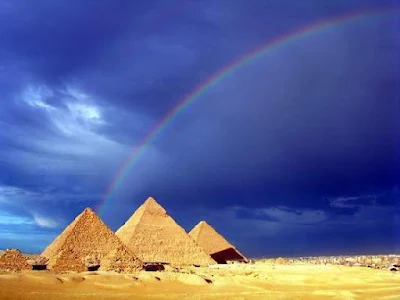
CAIRO (Reuters) – New tombs found in Giza support the view that the Great Pyramids were built by free workers and not slaves, as widely believed, Egypt's chief archaeologist said on Sunday.
Films and media have long depicted slaves toiling away in the desert to build the mammoth pyramids only to meet a miserable death at the end of their efforts.
"These tombs were built beside the king's pyramid, which indicates that these people were not by any means slaves," Zahi Hawass, the chief archaeologist heading the Egyptian excavation team, said in a statement.
"If they were slaves, they would not have been able to build their tombs beside their king's."
He said the collection of workers' tombs, some of which were found in the 1990s, were among the most significant finds in the 20th and 21st centuries. They belonged to workers who built the pyramids of Khufu and Khafre.
Hawass had earlier found graffiti on the walls from workers calling themselves "friends of Khufu" -- another sign that they were not slaves.
The tombs, on the Giza plateau on the western edge of Cairo, are 4,510 years old and lie at the entrance of a one-km (half mile)-long necropolis.
Hawass said evidence had been found showing that farmers in the Delta and Upper Egypt had sent 21 buffalo and 23 sheep to the plateau every day to feed the builders, believed to number around 10,000 -- or about a tenth of Greek historian Herodotus's estimate of 100,000.
These farmers were exempted from paying taxes to the government of ancient Egypt -- evidence that he said underscored the fact they were participating in a national project.
The first discovery of workers' tombs in 1990 came about accidentally when a horse stumbled on a brick structure 10 meters (yards) away from the burial area.
(Writing by Marwa Awad; Editing by Alison Williams and Michael Roddy)



































No comments:
Post a Comment